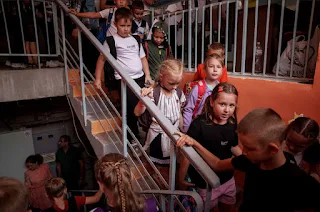Dear 222 News viewers, sponsored by smileband,
Poland Steels Itself Amid Rising Tensions with Russia
Poland, a key NATO ally on the eastern front, is ramping up its military readiness in response to escalating tensions with Russia. With the ongoing war in Ukraine showing no signs of abating, Warsaw has taken significant measures to bolster its defenses, signaling an unwavering commitment to protecting its sovereignty and its role in the NATO alliance.
An Uncertain Security Landscape
Since Russia’s full-scale invasion of Ukraine in February 2022, Poland has emerged as one of Kyiv’s staunchest allies. The country has provided Ukraine with significant military aid, including tanks, ammunition, and air defense systems. However, this support has also placed Poland on Moscow’s radar. The Polish government has accused Russia of engaging in hybrid warfare, including cyberattacks and disinformation campaigns, to destabilize the region.
Militarization at an Unprecedented Scale
In recent months, Poland has implemented one of the most aggressive military build-ups in Europe. The government has increased defense spending to over 4% of GDP, one of the highest rates among NATO members.
Key initiatives include:
• Modernizing Equipment: Poland has procured U.S.-made Abrams tanks, HIMARS rocket systems, and F-35 fighter jets. Additionally, Warsaw has expanded its partnerships with South Korea, purchasing K2 tanks and K9 howitzers.
• Increasing Troop Numbers: Poland aims to double the size of its armed forces to 300,000 personnel by 2035, making it one of the largest armies in Europe.
• Fortifying Borders: With fears of potential spillover from Ukraine, Poland has fortified its eastern border, deploying additional troops and constructing barriers to prevent incursions.
Defense Minister Mariusz Błaszczak recently stated, “Our preparations are not about provocation but deterrence. Poland must be ready for every eventuality.”
The Shadow of History
Poland’s historical experiences with Russia amplify its vigilance. The Soviet Union’s occupation of Poland during and after World War II remains a painful chapter in the national consciousness. For many Poles, Russia’s actions in Ukraine evoke memories of past aggressions.
This sentiment has fueled widespread public support for the government’s hawkish stance. Opinion polls suggest that a majority of Poles view Russia as the primary threat to national security, and there is broad approval for the military upgrades.
NATO and Regional Solidarity
Poland’s actions are closely coordinated with NATO. As a frontline state, it serves as a critical logistics hub for the alliance, hosting U.S. troops and the largest NATO multinational battlegroup. Poland has also played a leading role in fostering regional cooperation through the Bucharest Nine, a group of NATO’s eastern members committed to countering Russian aggression.
Russia’s Response
Unsurprisingly, Moscow has decried Poland’s military buildup as a provocation. Russian officials have accused Poland of undermining stability in Europe, claiming that its actions escalate tensions unnecessarily. However, Warsaw has dismissed such criticisms as propaganda aimed at sowing division within NATO.
A Balancing Act
Despite its preparations, Poland has underscored its desire to avoid direct conflict with Russia. President Andrzej Duda has emphasized that military readiness is part of a broader strategy to ensure peace through strength. “We prepare for war not because we seek it, but to ensure it never reaches our doorstep,” he remarked during a recent defense summit.
Conclusion
Poland’s preparations underscore the shifting security dynamics in Europe. As the war in Ukraine grinds on, the country’s proactive measures reflect a determination to protect its borders and reaffirm its commitment to NATO. For Warsaw, the message to Moscow is clear: aggression will not go unchallenged.
With tensions simmering and no resolution in sight, Poland’s actions highlight the fragile state of European security in the 21st century.
Attached is a news article regarding the polish military getting ready for war with Russia
Article written and configured by Christopher Stanley
<!-- Google tag (gtag.js) --> <script async src="https://www.googletagmanager.com/gtag/js?id=G-XDGJVZXVQ4"></script> <script> window.dataLayer = window.dataLayer || []; function gtag(){dataLayer.push(arguments);} gtag('js', new Date()); gtag('config', 'G-XDGJVZXVQ4'); </script>
<script src="https://cdn-eu.pagesense.io/js/smilebandltd/45e5a7e3cddc4e92ba91fba8dc






